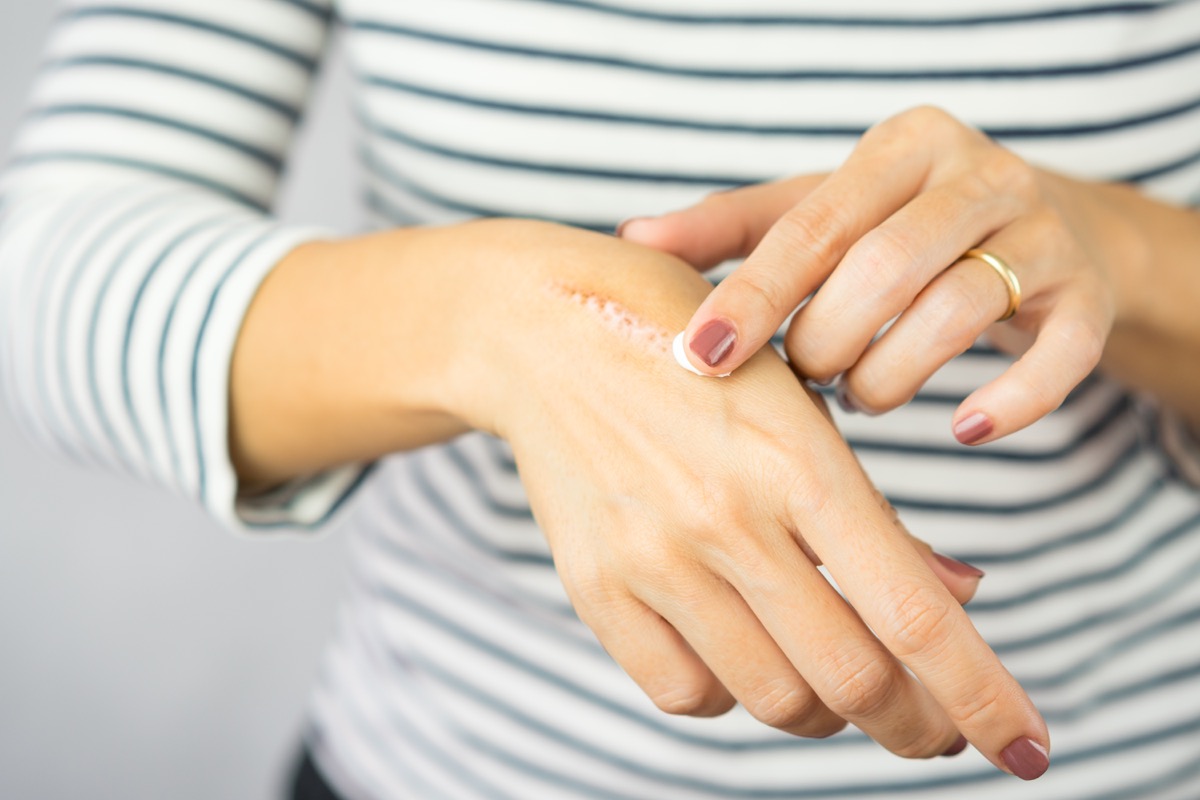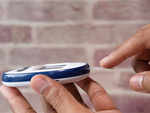You May Have Excessive Thirst and Frequent Urination

If you're developing diabetes, you may have polydipsia—increased thirst—or polyuria—frequent, excessive urination. These are very common, and it's all because of your kidneys. Your kidneys are the organs that filter and absorb glucose. When you have diabetes, you have excess glucose. "High levels of glucose function like a diuretic which leads to excess urination. This excess urination can then lead to extreme thirst and dehydration if you can't keep up with your fluid intake," says Dr. Adimoolam.
You May Always Feel Hungry

It's natural to feel hungry after a long workout or having skipped breakfast. But diabetes may feel hungry for seemingly no reason—and find that food doesn't queel the pangs. There's actually a medical term for always feeling hungry when you have diabetes—it's called polyphagia. "Diabetes is defined by an issue with a hormone called insulin," says Dr. Adimoolam. "Insulin is important to allow glucose to enter into cells where it can be used for energy. In Type 1 Diabetes, there is a deficiency in insulin production. In Type 2 Diabetes the body is resistant to the effects of insulin (insulin resistance). Since this glucose cannot enter into cells to be used for energy, your body feels that you need more food for energy and you seek out food. But eating more won't help—what helps is taking medications to help get glucose back into cells to be used for energy."
3
You May Have Blurry Vision

If you guessed blurry vision when you have diabetes was due to blood sugar issues, good job: you have been paying attention. Your eye lens swells when blood sugar levels are high, and body water is pulled into the lens. You may also have damage to the blood vessels in the retina; they can become weak and thin, and leak a fatty protein called exudate. This makes sight difficult.
4
You May Feel Very Tired

When your blood glucose is uncontrolled, you may have hyperglycaemia—which can lead to nausea, fruity-smelling breath, shortness of breath and dry mouth—or high blood sugar, and feel a lack of energy. "Patients with diabetes are unable to make use of the high glucose levels in the body for energy—this is why they feel exhausted," says Dr. Adimoolam.
5
You May Find Your Cuts and Wounds Heal Slowly

A scrape or scratch is nothing to most people, but to diabetics, it can result in a serious issue, leading to infection. Diabetics have been known to get foot ulcers for example—wounds on the feet that may never heal. Why? There's a direct connection between blood glucose and healing. "In primary closure of surgical wounds in high-risk patients, poor glycemic control is significantly associated with worse outcomes," said the definitive study. "Every effort should be made to ensure tight control in both the chronic and subacute perioperative periods." "Chronic exposure to high glucose values leads to disease of the blood vessels (what we call 'vascular complications of diabetes')," says Dr. Adimoolam. "When blood vessels are damaged, there is limitation of the flow of blood to those specific areas of the body which leads to slow wound healing."
6
You May Have Numbness or Tingling in Your Hands or Feet

You may have a numbness or tingling in your hands or feet due to diabetes. This is because of diabetic neuropathy, a nerve damage that can "affect as many as 50% of people with diabetes," say the doctors at the Mayo Clinic. You may also have pain or cramps. Or have proximal neuropathy (diabetic polyradiculopathy)—"This type of neuropathy — also called diabetic amyotrophy — often affects nerves in the thighs, hips, buttocks or legs. It can also affect the abdominal and chest area," says the clinic.
7
You May Have Patches of Dark Skin

Patches of dark skin—called Acanthosis nigricans—can be a sign of diabetes or, far more rarely, certain cancers.you'll see the velvety folds usually in the creases of your skin—mainly of the back of ones neck and armpits. What causes them? Usually insulin resistance, which is why this is so common among diabetics. "Too much insulin stimulates an increase in the abnormal growth of these skin cells," says Dr. Adimoolam.
8
What to Do If You Have Any of the Symptoms Mentioned

Watch for that symptom and the others mentioned here, and contact a medical professional if you experience any of them. "Some amount of physical activity everyday may help lower one's blood sugars and possibly prevent type 2 diabetes," says Dr. Adimoolam. "Daily activity may even help with weight loss and improving your heart's health."






)





